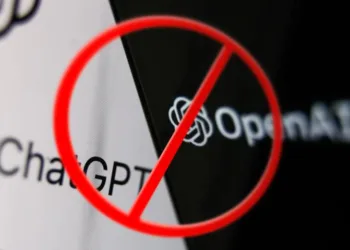As someone who has cherished the Star Wars saga since childhood, I am thrilled to call myself a fan. The universe of ‘a galaxy far, far away’ is a rich tapestry of diverse narratives, fascinating species, and settings that invite endless exploration. So, when the chance arose to dive into and review Ubisoft’s latest installment, Star Wars Outlaws, I truly couldn’t contain my excitement.
Having experienced numerous Star Wars games and previously reviewed Star Wars Jedi: Survivor, I entered this experience with certain expectations. While some of these expectations were fulfilled, others left me wanting more. In Outlaws, you take on the role of Kay Vess, an emerging thief navigating the gritty underbelly of the Star Wars universe. Set between The Empire Strikes Back and Return of the Jedi, the plot makes a minimal dent in the overarching canon, but it still has important elements to offer.
Star Wars Outlaws addresses a burning curiosity that fans may have: what unfolds away from the galaxy’s iconic heroes, away from lightsabers and Force powers? The answer: life continues in its own chaotic manner for countless others.
Stealth Gameplay at Its Core

Ubisoft positions itself as a master of stealth mechanics, having delivered titles like the Assassin’s Creed and Prince of Persia series. In Star Wars Outlaws, they aim to emphasize those stealth elements. You control Kay Vess, who is simply human—no heroic Jedi status or super-soldier prowess to be found here. While she wields a blaster, her combat skills aren’t on par with those of seasoned fighters, making high-energy confrontations a risky endeavor.
Instead, Kay employs stealth to evade foes, incapacitating them when absolutely necessary, and relies on her blaster pistol if pushed into a corner. Her alien sidekick, Nix, not only adds charm but also proves invaluable, performing much of the stealthy legwork while Kay remains hidden behind cover. Nix can perform various tasks—triggering explosives, pickpocketing targets, interacting with switches, sabotaging panels, and more. While Kay could technically execute those actions, doing it herself puts her at greater risk of being caught.
On paper, this design seems promising, yet the execution can be lacking, especially when compared to Ubisoft’s earlier works. Outlaws feels like it aspires to the stealth mechanics of Assassin’s Creed but in a much simpler fashion. Although I successfully snuck past numerous faction members and stormtroopers, the thrilling rush typically experienced in stealth gameplay was absent.
There was no real tension from outwitting foes or the fear of detection; it felt more like a task to check off. Alongside sneaking, limited platforming features are introduced, if only to allow for some basic climbing, jumping, and grabbing at conveniently highlighted ledges. A toggle exists to disable these indicators, though that hardly enhances the overall play.
Nonetheless, the game appears better optimized than other recent Star Wars titles. I had to enable DLSS, yet still managed a fluid gaming experience. Frame rates dipped to 28 FPS occasionally, but it didn’t notably detract from the gameplay enjoyment. Compared to Jedi Survivor, Outlaws felt much more stable.
Nix: Your Trusty Ally

Nix, the alien companion, stands out as the most intriguing part of the game—so much so that I found myself wishing for a game entirely centered on him. This concept has worked brilliantly in titles like Stray; the potential was evident here too. Nix assists Kay with a variety of challenges she cannot overcome alone. He can slip through tight spaces to activate switches, disable cameras, set off distractions with explosives, pickpocket, retrieve distant items, and even help identify enemies and points of interest.
This detection ability functions similarly to the Eagle Vision from Assassin’s Creed, albeit with a shorter range. By pressing a button, Nix emits a pulse that highlights adversaries, interactable objects, and loot to collect. I appreciated how this feature assisted in planning routes during infiltrations of cartel hideouts or Imperial bases, allowing me to avoid or incapacitate threats effectively.
Considering Nix’s extensive utility, Kay feels somewhat less capable. While she can mimic Nix’s actions, executing them without drawing attention seems less viable.
Limited Yet Enjoyable Combat

When stealth inevitably fails and firefights ensue, Kay can rely on her trusty blaster pistol to fend off syndicate members and Imperial Stormtroopers. The weapon is sufficiently powerful; most foes drop after two shots, and headshots can eliminate targets in a single hit. As you progress, you can upgrade the blaster, enhancing its damage, ammo capacity, and firing modes.
Though ammo is infinite, the blaster overheats with rapid firing. If overheated, you’ll need to pause before firing again. You won’t find yourself going full John Wick on your foes; in most scenarios, you’ll stay cushioned behind cover, only firing when enemy bullets pause. You can also snag blaster rifles dropped by enemies, which possess limited ammo but offer faster firing rates and greater power without the overheating drawback.
Still, typical gameplay in Star Wars Outlaws revolves around stealth; you’ll be sneaking up on foes to take them down silently. The game offers a grappling animation when Kay knocks out enemies from behind using the same controls that trigger a three-hit melee combo. Although this approach is non-lethal, if enemies discover the bodies, the game’s AI treats the scenario as if they were killed, which may confuse players aiming for a pacifist playthrough.
Jittery Speeder and Ship Controls

When you’re not sneaking around on missions, you’ll explore the world on your speeder, with opportunities to pilot your ship to one of four planets. Keep in mind that during your journey, you might face ambushes from outlaws, pirates, and Imperial forces. This is where control issues come into play. Even a gentle button press can send you careening off course into a crash. This frustrating experience is especially noticeable with the speeder, notorious for its sudden uncontrollable accelerations that can easily throw you off your balance.
Throughout my gameplay, I frequently found myself pitched off my speeder into the environment from minor button taps. The ship, known as The Trailblazer, offered a slightly better experience, though speed control could still feel unwieldy, particularly when navigating obstacles. At least you can throttle back your speed, unlike with the speeder. Compared to Jedi Fallen Order’s Mantis, where you lack piloting control entirely, The Trailblazer is larger and more spacious, with upgradeable parts like cannons, shields, armor, and engines.
A Rich World, Yet Missing Star Wars Essence

As Kay Vess, your adventure begins in a cantina’s attic on Canto Bight, the casino planet introduced in The Last Jedi. As you embark on your initial job, which predictably derails, you encounter an array of merchants and vibrant environments, picking up snippets of dialogue and exploring streets brimming with life. However, something feels off.
Next, you flee Canto Bight and crash onto the open-world landscape of Toshara, where the actual adventure takes shape. You’ll take your speeder for a spin and head to Mirogana, the area’s central hub, embarking on your first quests. Syndicates, NPCs, and Imperial Stormtroopers populate this world, creating a lively backdrop. Yet, while the environment is richly detailed and bustling, it lacks the inherent Star Wars magic. It feels like just another sci-fi planet from any adventure game.
New narratives and unexplored territories in the Star Wars universe are exciting prospects. Interestingly, the debut area rooted in Canto Bight—a planet with limited exposure due to Disney’s hesitance to delve into sequel-related content since The Rise of Skywalker—seemed promising. However, it struggles to capture that quintessential Star Wars essence. Jedi Fallen Order and Survivor managed to balance new locales with that unique feeling inherent to Star Wars, integrating alien cultures and rich narratives seamlessly.
Among the planets, only Tatooine came close to delivering that nostalgic Star Wars ambiance. The dusty terrain, the rough-around-the-edges towns, and the cantinas chock-full of scoundrels truly encapsulated the essence of Star Wars. Unfortunately, one planet out of four isn’t nearly enough to leave a satisfying impression.
Final Verdict

Star Wars Outlaws presents the bones of an enjoyable game, perhaps even a great one, but falters in key areas. Drawing inspiration from other Ubisoft franchises such as Assassin’s Creed and Watchdogs, the experience comes across as a stripped-down variation rather than an independent work of art. The elements of stealth, combat, exploration, and mission design often feel overly simplified. Kay Vess, while refreshing as a non-Jedi protagonist, feels underdeveloped and at times grating.
While she seeks a big score and strives to accumulate credits, her motivations remain ambiguous. The obstacles posed by a death mark seem to elicit little urgency. Is she seeking the credits to pay off this bounty? If so, the game doesn’t effectively communicate that urgency. If that context exists, it’s merely an afterthought. Meanwhile, Nix displays far more personality despite his inability to speak; an experience centered around him might have carried a deeper emotional impact similar to Stray.
Nonetheless, Outlaws is an enjoyable game that runs efficiently. It does exhibit some clunky mechanics, yet with practice, players can adapt to them. The core issue, however, is the absence of Star Wars essence. Lacking that unique touch, it feels more like a straightforward sci-fi heist game. While enjoyable, it certainly doesn’t deliver the full Star Wars experience. Expect to have fun, but don’t anticipate being blown away.










